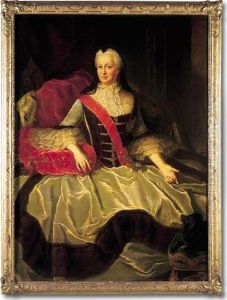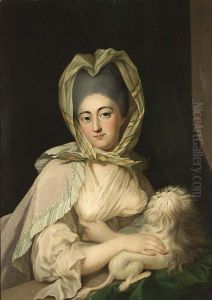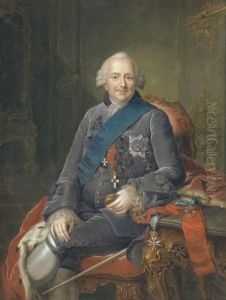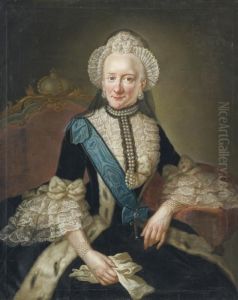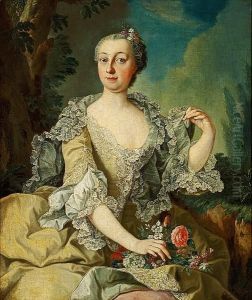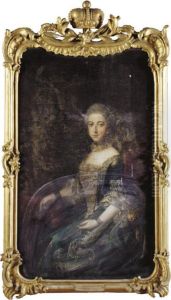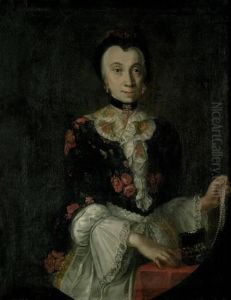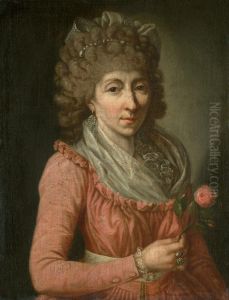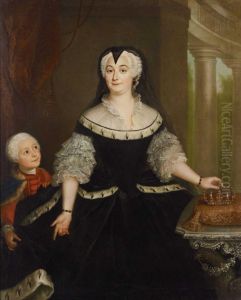Anna Rosina Liszewska Paintings
Anna Rosina Liszewska, also known as Anna Rosina de Gasc, was a prominent portrait painter of the 18th century. Born in 1713 in Berlin, she was part of a family of artists. Her father, Georg Liszewski, was a painter at the court of Prussia, and her brother, Georg Liszewski, was also a painter. This familial connection to the arts provided her with an environment conducive to developing her artistic talents from a young age.
Anna Rosina showed an early aptitude for painting and was trained by her father before furthering her education under the tutelage of Antoine Pesne, a French painter who had become the court painter in Prussia. Pesne's influence is evident in Liszewska's style, which incorporated the Rococo elegance and the attention to detail characteristic of French portraiture of the time. In 1734, she married the painter David Matthieu, who was also working at the Prussian court, and their marriage marked the beginning of a productive artistic partnership.
Liszewska's reputation as a portrait painter grew steadily, and she became known for her portrayals of the Prussian aristocracy and bourgeoisie. Her work often featured women and children, and she had a particular talent for capturing the grace and individuality of her subjects. In 1764, she married again to a lawyer, Johann Friedrich de Gasc, after the death of her first husband. This marriage led to her sometimes being referred to as Anna Rosina de Gasc.
Despite living in an era when female painters were not always taken seriously, Anna Rosina Liszewska achieved a considerable degree of success and recognition. She worked at a time when women's roles in the arts were limited, but her skill and connections allowed her to navigate these challenges effectively. She continued to paint up until her death in 1783, leaving behind a body of work that contributes to our understanding of the Rococo period and offers valuable insights into the social and cultural life of 18th-century Prussia.
